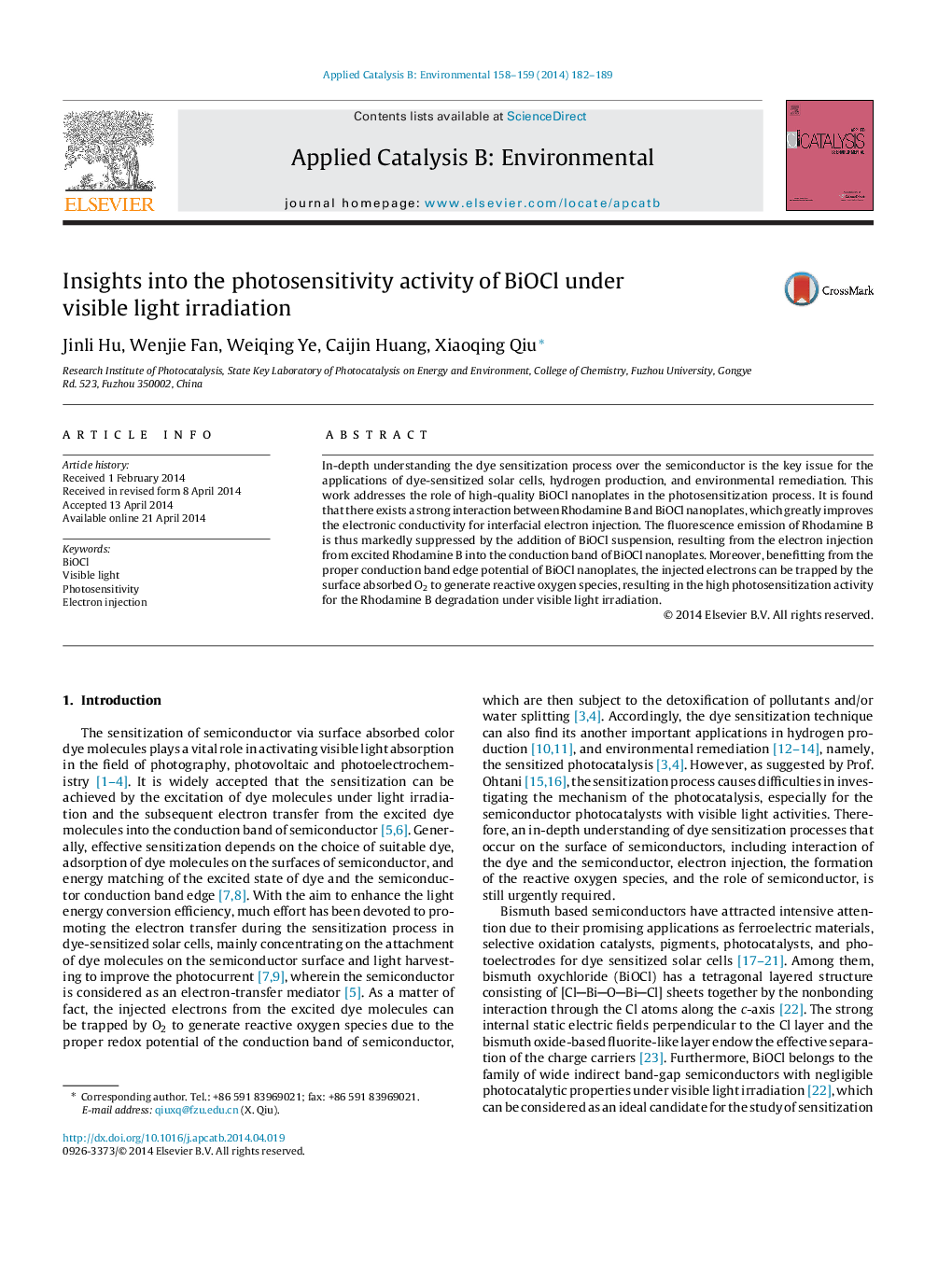| کد مقاله | کد نشریه | سال انتشار | مقاله انگلیسی | نسخه تمام متن |
|---|---|---|---|---|
| 45869 | 46426 | 2014 | 8 صفحه PDF | دانلود رایگان |

• Uniform BiOCl nanoplates were obtained by using a facile one-step hydrothermal method from the mixed solvent of water and ethanol.
• BiOCl nanoplates exhibited excellent activity for the degradation of Rhodamine B dye solution via a photosensitization pathway under visible light irradiation.
• The strong interaction between Rhodamine B and BiOCl nanoplates could greatly reduce the interfacial electron charges transfer resistance.
• The injected electrons could be trapped by the surface absorbed O2 to generate reactive oxygen species due to the proper conduction band edge potential of BiOCl nanopalets.
In-depth understanding the dye sensitization process over the semiconductor is the key issue for the applications of dye-sensitized solar cells, hydrogen production, and environmental remediation. This work addresses the role of high-quality BiOCl nanoplates in the photosensitization process. It is found that there exists a strong interaction between Rhodamine B and BiOCl nanoplates, which greatly improves the electronic conductivity for interfacial electron injection. The fluorescence emission of Rhodamine B is thus markedly suppressed by the addition of BiOCl suspension, resulting from the electron injection from excited Rhodamine B into the conduction band of BiOCl nanoplates. Moreover, benefitting from the proper conduction band edge potential of BiOCl nanoplates, the injected electrons can be trapped by the surface absorbed O2 to generate reactive oxygen species, resulting in the high photosensitization activity for the Rhodamine B degradation under visible light irradiation.
Figure optionsDownload as PowerPoint slide
Journal: Applied Catalysis B: Environmental - Volumes 158–159, October 2014, Pages 182–189